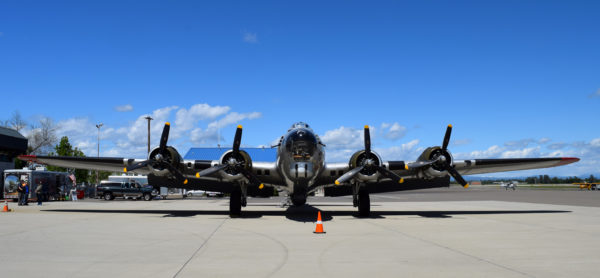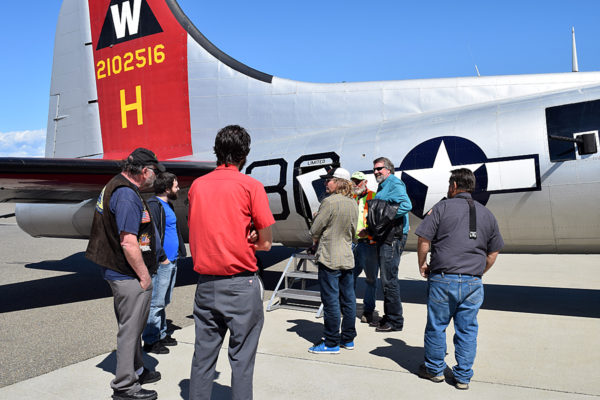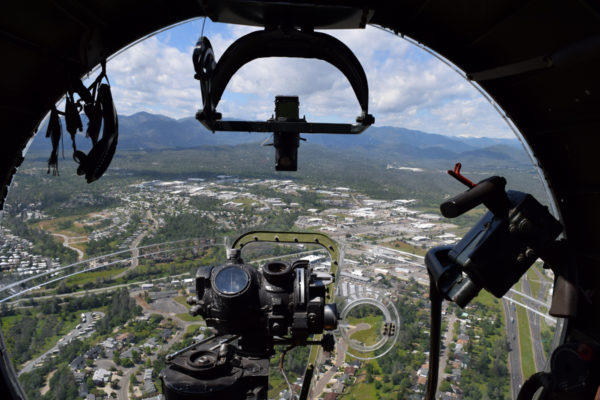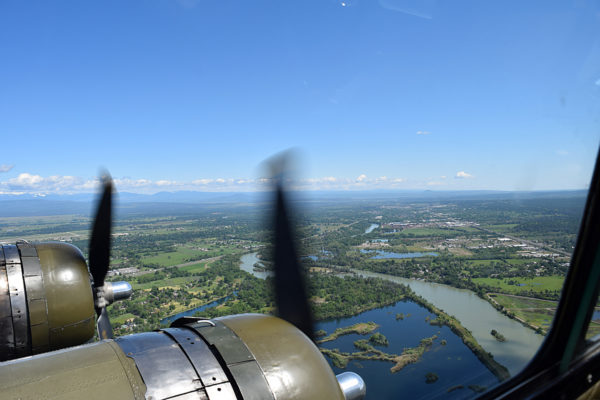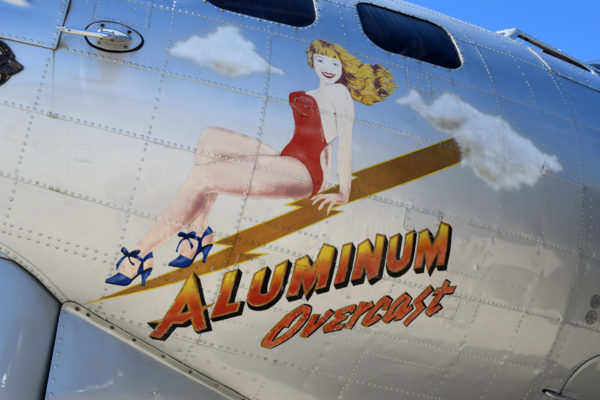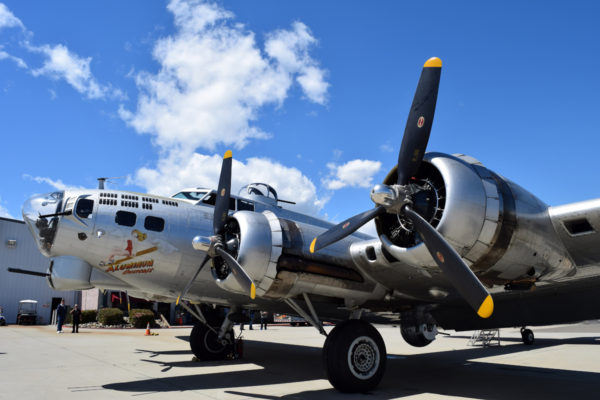More than 70 years ago, as many as 1,000 B-17 bombers could be amassed to darken the skies over Nazi Germany and other Axis powers.
On Thursday, Aluminum Overcast, one of only a dozen remaining airworthy B-17 bombers in the world and a living reminder of World War II aviation history, rumbled into Redding.
The iconic bomber, replete with the 13 .50-caliber machine guns that earned it the Flying Fortress nickname, will remain at Redding Municipal Airport through Sunday and is available for tours and flights.
The plane is owned by the Experimental Aircraft Association, a nationwide group of aviation enthusiasts, and the Redding tour stop is sponsored by the Redding EAA Chapter 157.
On Thursday, a group of reporters, EAA volunteers and Cong. Doug LaMalfa, R-Richvale, were treated to a demonstration flight and a chance to experience, albeit briefly, what it was like for the thousands of young men who flew countless missions in the B-17.
EAA volunteer pilot Rick Fernald said the B-17 crew likes to do a little “audio advertising” each time they arrive at a new airport on their itinerary, so Thursday’s flight constituted about 20 minutes of easy circles above Redding at an altitude of about 1,500 feet.
Even in that relaxed, sunny setting with nary an enemy fighter plane in sight, the noise (robust but not deafening), vibrations and the sensation of thrust from the four 1,200-horsepower Curtiss-Wright radial engines was enough to spark the imagination and set the mind to wondering how it felt for an 18-year-old airman to be buckled in and rattling off on a combat mission to Berlin.
That experience and those sentiments are precisely why the EAA works to keep Aluminum Overcast in tip-top shape and moving about the country.
Keeping a 72-year-old bomber airborne is not an inexpensive proposition, according to Terry Tucker, the crew chief. Even with EAA volunteer pilots, it costs $4,000 for each hour of flight time. “It’s a money pit, but we do it for the memory of those brave, brave World War II veterans,” Tucker said.
“Seats are on the expensive side, but every penny goes into keeping this machine in the air for as long as possible,” Tucker added.
Shawn Knickerbocker, who piloted Thursday’s flight, said he gladly gives of his time because Aluminum Overcast represents “living history and we’re transferring that knowledge and keeping the dream alive.”
Fernald, also a retired military pilot, said sitting at the controls of the B-17 “is the best part-time volunteer job I’ve ever had. We’re aviation fans, first and foremost, and when you fly this thing, I don’t care what kind of pilot you are, you’re a rock star.”
Knickerbocker, who said his father was a tail gunner in a B-17, said the people he meets—and the World War II veterans in particular—are the best part of the job.
Both pilots said the B-17, which travels with a pair of mechanics, is a trustworthy plane but challenging to fly at times. “I tell people it’s like driving a cement truck with two flats and no power steering,” Fernald said with a laugh.
Boeing built 12,731 B-17s over a 10-year period beginning in 1935. Of those aircraft, 4,735 were lost during combat missions.
Prized for its speed, range and durability, the B-17 became the emblematic bomber of World War II. According to Air Force records, B-17s dropped 640,036 tons of bombs—more than any other aircraft during the war.
Although the Consolidated B-24 bomber was faster and carried a larger payload, it had a lower rate of survival in combat. “A lot of the younger kids would say, ‘if it ain’t Boeing, I ain’t going,” Knickerbocker said.
Serving on a B-17 crew had its share of hazards as well. According to The History Learning Site website, of the 250,000 Americans who flew in B-17s, 48,500 were either killed or wounded.
Flights on Aluminum Overcast are available from 10 a.m. to 2 p.m. Friday through Sunday. The cost is $435 for EAA members and $475 for the general public. A minimum of six passengers is required and 10 passengers is the maximum. Ground tours are available from 2 to 5 p.m. at a cost of $10 per individual or $20 per family; veterans and active-duty military are invited to take a free ground tour. Visit www.b17.org or call Jim Bremer at 524-5744.
Photos by Jon Lewis.

